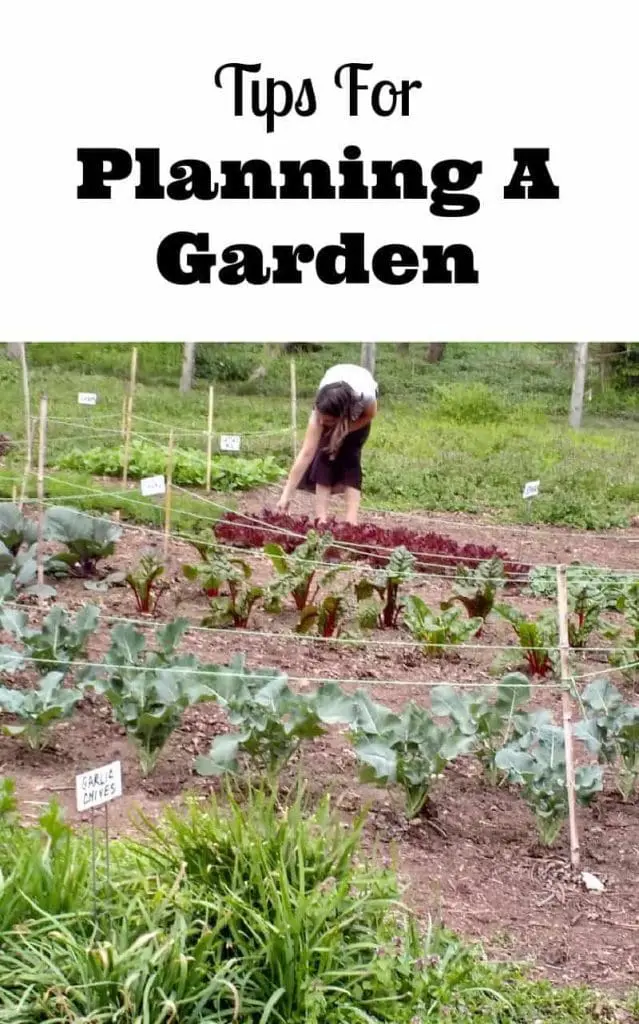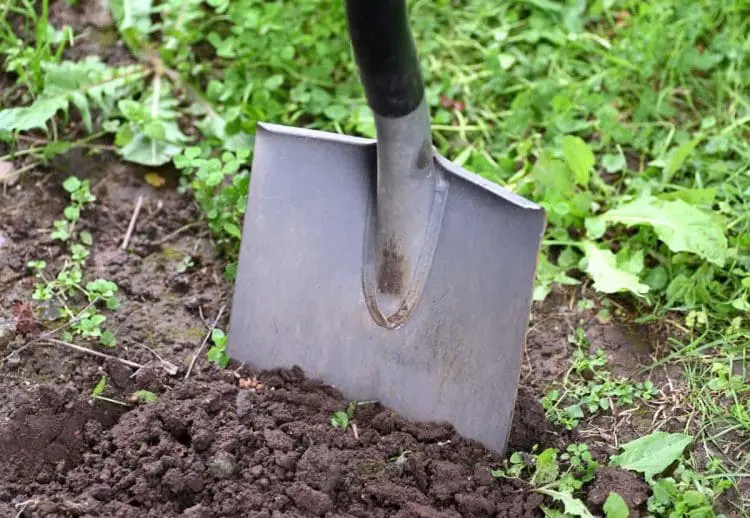Are you beginning to think ahead to planting season? The truth about gardening is that it’s fairly easy to produce some successful crops, however having a truly bountiful vegetable garden often eludes beginner gardeners. This is because a productive garden takes some preparation and planning. You must consider the garden location carefully as well as how to layout a garden. Garden soil preparation is also key to growing healthy plants with lots of fruits and vegetables that reach full size. Here are some tips to help with how to prepare garden soil and planning your garden. Good soil is essential to a healthy garden!

Planning A Garden Location
Garden soil preparation is one of the most important factors for a success garden. However, before we delve into that, let’s talk about your first step- choosing where you will prepare your garden soil. I encourage you to avoid frustration down the road by thinking ahead and selecting your garden location carefully. The best soil won’t help if you don’t have enough water and enough sunlight. Therefore, select a spot that has access to plenty of both.
You don’t want to lug water over to a huge garden over and over again during the hot growing months. Make sure your garden spot will be within reach of a watering hose. If that is not an option, then start with a small garden to make sure your watering chore is feasible. You might be extremely excited to kick off your garden now, but will you still be this revved up in July when it’s sweltering outside? Make sure your thirstiest and most high maintenance plants are grouped together and located for easy access.
Most fruit and vegetable plants require full sunlight (6 hours of direct sun or more) so select an area that gets plenty of sun. Consider what time of day the potential garden plot will get the most sun exposure.

How To Prepare Soil For Garden
Soil, soil, soil. This is where a great begins. No garden will get off the ground (so to speak) without some TLC for the soil. To make sure your soil is rich and ready for planting, follow the simple steps outlined below for garden soil preparation. Have your kids help you and you just may be surprised how fun garden soil prep is!
1. Aerate Garden Soil
Once you have selected a space for your garden, the first thing you’ll want to do is aerate the soil. You can do this by simply digging up the soil using a shovel or garden fork. Then, break up any large dirt clumps and pick out big rocks. As you’re working to break the soil up, you’ll be able to determine the type of soil, and its condition. Is it compacted and hard to break up? Poor soil will need lots of soil amendments. Sandy soils don’t get compacted easily but are poor in nutrients. Or is it sticky and rich in clay? Clay soil is dense and needs organic material additions such as peat moss to help improve soil structure. These will be important clues in determining how best to enrich your soil.
2. Enrich Your Garden Soil
I suggest the tips below as the best way for enriching soil for most people. However, if you want to be very exact about it you can do a soil test first. A soil test kit is a particularly good idea if you want to place your garden bed near an area that has pine trees. They can lead to acidic soil. While a slightly acidic soil ph (5.8 to 6.5) is good for most vegetable plants, too much acidity will be harmful.
The ideal garden soil is loose and rich in organic materials and minerals. If you find that your soil’s condition is hard, sticky or rich in clay, you will want to enrich its texture. Do some good garden soil prep for gardening with one of these three options:
- Livestock manure is a natural soil additive that is full of nutrients and easily absorbed by plants. Manure works best when mixed into garden soil about 3 months in advance to planting your garden. That being said, I recommend waiting to add the green manure into your soil until after your growing season has ended. Doing this will prepare the soil for your next growing season without the risk of contaminating your fruits and vegetables. Many farms offer days where you can come pick up manure for free when they are cleaning out the stables, otherwise you can find it at your local garden store.
- Compost is another great and eco-friendly way to enrich your garden soil. This natural fertilizer works quickly to improve your soils water retention and helps to create a rich garden bed for your plants. Simply sprinkle a light layer of compost (about ¼-inch thick) over your garden soil, or if your soil is very compact, mix it into your garden soil prior to planting your fruits and vegetables. You can make your own compost by using scraps from your kitchen waste and grass clippings in a compost pile. Or purchase it at your local garden center store.
- Organic garden soil can be found at your local gardening supply store and should be mixed well with your current gardening soil. This option works best with soil that is very compact, high in clay content, or extremely sandy. To break up the doughy texture of your soil, mix it with as much of this solution as needed, or until your soil easily crumbles in your hands. Organic garden soil is pretty care free because it is a great, easy to work with texture and full of nutrients. It is perfect for filling garden beds. The only draw back is that it tends to dry out quickly and easily.
3. Maintain Your Garden Soil:
Once you’ve prepped your healthy soil and begun planting your garden, keep the soil enriched by mulching it. A mulch is a layer of material applied to the surface of the soil. Mulching your garden helps to conserve moisture, improves the fertility and health of the soil, reduces weed growth and enhances the visual appeal of the area. Hay is a great mulching material and so are wood chips.
You may find it helpful to use organic fertilizers throughout the growing season to keep adding small amounts of nutrients as you go. Preparing your garden soil is an important step to creating a successful flower garden or vegetable garden. Plus, it’s also a fun way to get your children involved, teach them about nature and give them a chance to play in the dirt!
Bottom line: If your soil is more or less filled with fantastic organic soil content, you can’t go far wrong.
How To Layout A Garden (What To Plant And Where)
The final step is planning your garden for the entire season. This can be the fun part. Thinking about what you want to be able to harvest is always exciting! Garden planning is also an area that will help will help you get the highest yield out of your garden, if done right.
Planning your garden is an often overlooked element of growing delicious and organic food for you and your family. There are lots of elements to consider such as how big your plants will grow (both for how much room they will need and to know how much they will shade neighboring plants). You will also want to consider the benefits of companion planting and nitrogen fixing plants.
Gardening without planning lowers your garden yield. If you don’t plan at all, you will probably get some yield but you will probably encounter mysterious problems. Your tomatoes may never ripen, your zucchini flowers may never turn into zucchini. Troubleshooting may seem complex to you at that point. However, planning could have prevented these gardening problems by helping you plant early enough and know which plants need more than one to cross pollinate.
To be honest, you could spend hours planning the most efficient garden. I suggest you make it easier by using a free garden planner app. The best apps will allow you to know things like when you plan to plant each vegetable, the shade requirements of each seedling, and the proper support needed for each plant.
Conclusion
Spring is on the way and this growing season, I encourage you to take a stab at planting your own garden. Whether you start off with a small herb garden, or go all in and dedicate a portion of your backyard to your new hobby, gardening gives you the opportunity to grocery shop for your fruits, vegetables and herbs without ever leaving your house! When starting a garden, there are three important steps you’ll want to pay attention to in order to ensure your garden is successful. First, you’ll want to choose a spot for your garden that gets plenty of sun and water. Then, you’ll want to do some garden soil preparation. Finally, use tips for how to layout a garden to get the best garden yield.
Use these three critical tips for planning your garden, and even the newbie gardener will get off on the right foot. I hope you find these tips for planning your garden helpful. Enjoy spring planting. Go ahead and get started on a journey towards an abundant food bearing garden! Rich soil means healthier plants and the best results!
Have you tried gardening before? What additional garden soil preparation tips can you share? We’d love to hear about your garden experiences in the comments section below or on social media @familyfocusblog
If all of this sounds like too much work, try indoor micro gardening instead!
Related Posts:
10 Tips On Vegetable Gardening For Beginners

